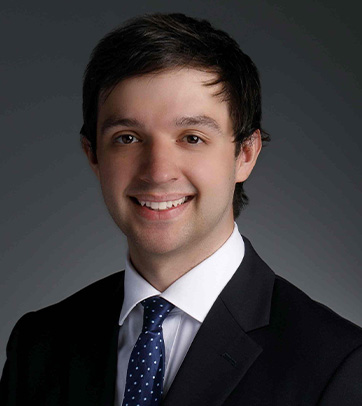

By Dawn Owen, MD, PhD, Mayo Clinic Rochester


Esophagitis is a common side effect of radiotherapy, particularly in the setting of concurrent systemic therapy or in the treatment of ultra-central lesions. Constraints for the esophagus in the conventionally fractionated setting have not changed in the last 10 years since QUANTEC was published and the constraints for hypofractionated radiation remain unclear. Esophagitis markedly affects the quality of life of patients during and in the period immediately after radiotherapy.
Two studies from Virginia Commonwealth University (VCU) and Yale University highlight this issue and try to provide some guidelines for midrange doses for lung radiotherapy and esophageal dose. Both are featured in the oral abstract sessions presented at the 2023 Multidisciplinary Thoracic Cancers Symposium given ongoing interest in mitigating this common acute side effect.
In the study from Nathaniel Miller et al. (VCU), 72 patients with primary lung cancer treated with definitive intent (defined as 45-66 Gy in 1.5 Gy BID to 3 Gy fractions daily) with IMRT were included. Most patients received concurrent systemic therapy (65%). The incidence of grade 2+ esophagitis was significantly related to the esophageal length treated to greater than 30 Gy, the percentage of esophagus receiving > 30 Gy, full circumferential esophageal radiation to the full prescribed dose, concurrent chemotherapy, and young age. The authors noted that midrange esophageal dose constraints may be useful.
The complementary study by Alexander Sasse, MS4, et al. from Yale examined the question of esophagitis in patients treated with hypofractionated lung radiotherapy treated with 60 Gy/15 fx or 70 Gy/18 fx (the latter was explored in a prior trial). The study included 107 patients although only 27% of patients had tumors within 2 cm of the esophagus. The incidence of grade 2+ esophagitis was 12.1% with no difference between the 70 Gy and 60 Gy patients. The authors reported that a Dmean <17.5 GY and Dmax < 54 Gy reduced the risk of grade 2+ esophagitis below 20%.
Currently, hypofractionated radiation and SBRT esophageal constraints have more of an emphasis on maximum dose while conventionally fractionated radiation correlates esophagitis most with mean esophageal dose. These two studies provide some insight into “medium” dose constraints that may be helpful for predicting and managing esophagitis. The VCU study has a very heterogeneous population treated with both NSCLC and SCLC regimens but illustrates that the longer the stretch of esophagus radiated, the greater the risk of esophagitis. The Yale study is interesting in that it is a much more homogeneous population, all treated with only two hypofractionated regimens, and their observations of a Dmean and Dmax for a 15 fraction prescription may guide esophageal constraints for the treatment of ultra-central lung lesions.